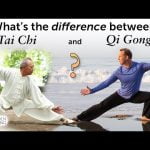The Origins of Tai Chi: Unraveling its Historical Roots and Significance
Tai Chi, also known as Tai Chi Chuan, is a traditional Chinese martial art that has gained widespread popularity for its health benefits and graceful movements. However, its origins and historical roots have long been a subject of debate and intrigue.
According to historical records, Tai Chi originated in the 17th century in the Chen Village of Henan Province, China. It was developed by Chen Wangting, a military officer of the Ming Dynasty, who combined elements of martial arts, philosophy, and meditation to create the art form we know today.
Chen Wangting drew inspiration from various martial arts styles, including Shaolin Kung Fu and the ancient Chinese philosophy of Yin and Yang. He sought to create a martial art that encompassed both internal and external movements, promoting harmony between the mind, body, and spirit.
The significance of Tai Chi lies in its holistic approach to health and well-being. Through slow, flowing movements and deep breathing techniques, practitioners aim to cultivate internal energy, known as “Qi,” and achieve a state of balance and tranquility.
Is Tai Chi Taoist or Buddhist? Unraveling the Ancient Origins and Spiritual Influences
While Tai Chi is often associated with Taoism due to its emphasis on the principles of Yin and Yang, it also has influences from Buddhism. The philosophical underpinnings of Tai Chi align with both Taoist and Buddhist teachings, emphasizing mindfulness, meditation, and the quest for spiritual enlightenment.
Taoism, with its focus on natural harmony and the cultivation of inner energy, provides the framework for the physical and spiritual aspects of Tai Chi. On the other hand, Buddhism contributes to the meditative and mindfulness practices that are integral to Tai Chi.
It is important to note that Tai Chi is not inherently religious but rather a practice that can be embraced by individuals of any faith or belief system. Its teachings and principles can be interpreted and applied in a way that resonates with each individual’s personal journey.
Tai Chi: Unveiling the Scientific Evidence Behind Its Benefits
Over the years, numerous scientific studies have been conducted to explore the potential health benefits of practicing Tai Chi. The results have been promising, revealing a wide range of positive effects on physical, mental, and emotional well-being.
Research has shown that regular practice of Tai Chi can improve balance, flexibility, and strength, making it particularly beneficial for older adults in preventing falls and maintaining overall fitness. It has also been found to reduce stress, anxiety, and depression, promoting mental and emotional well-being.
Furthermore, studies have demonstrated that Tai Chi can enhance cardiovascular health, lower blood pressure, and improve immune function. It is also believed to have positive effects on chronic conditions such as arthritis, fibromyalgia, and chronic pain.
Unveiling the Ancient Roots: Exploring the Oldest Tai Chi Style
While Chen-style Tai Chi is the oldest documented style, there are other variations that have emerged over time. Each style has its unique characteristics and movements, but they all share the common goal of promoting health, relaxation, and self-defense.
The five main traditional styles of Tai Chi are Chen, Yang, Wu/Hao, Wu, and Sun. Each style has its lineage and distinct characteristics, offering practitioners a diverse range of options to explore based on their preferences and goals.
Chen-style Tai Chi, with its explosive movements and low stances, is often considered the original and most martially oriented style. It preserves the ancient techniques and principles passed down through generations in the Chen family.
Yang-style Tai Chi, on the other hand, is characterized by its slow and graceful movements, making it popular among beginners and those seeking a gentle form of exercise. It emphasizes relaxation, balance, and flow.
Wu/Hao-style Tai Chi focuses on small and precise movements, with an emphasis on internal energy and meditation. Wu-style Tai Chi is known for its compact and circular movements, while Sun-style Tai Chi incorporates elements of both internal and external martial arts.














